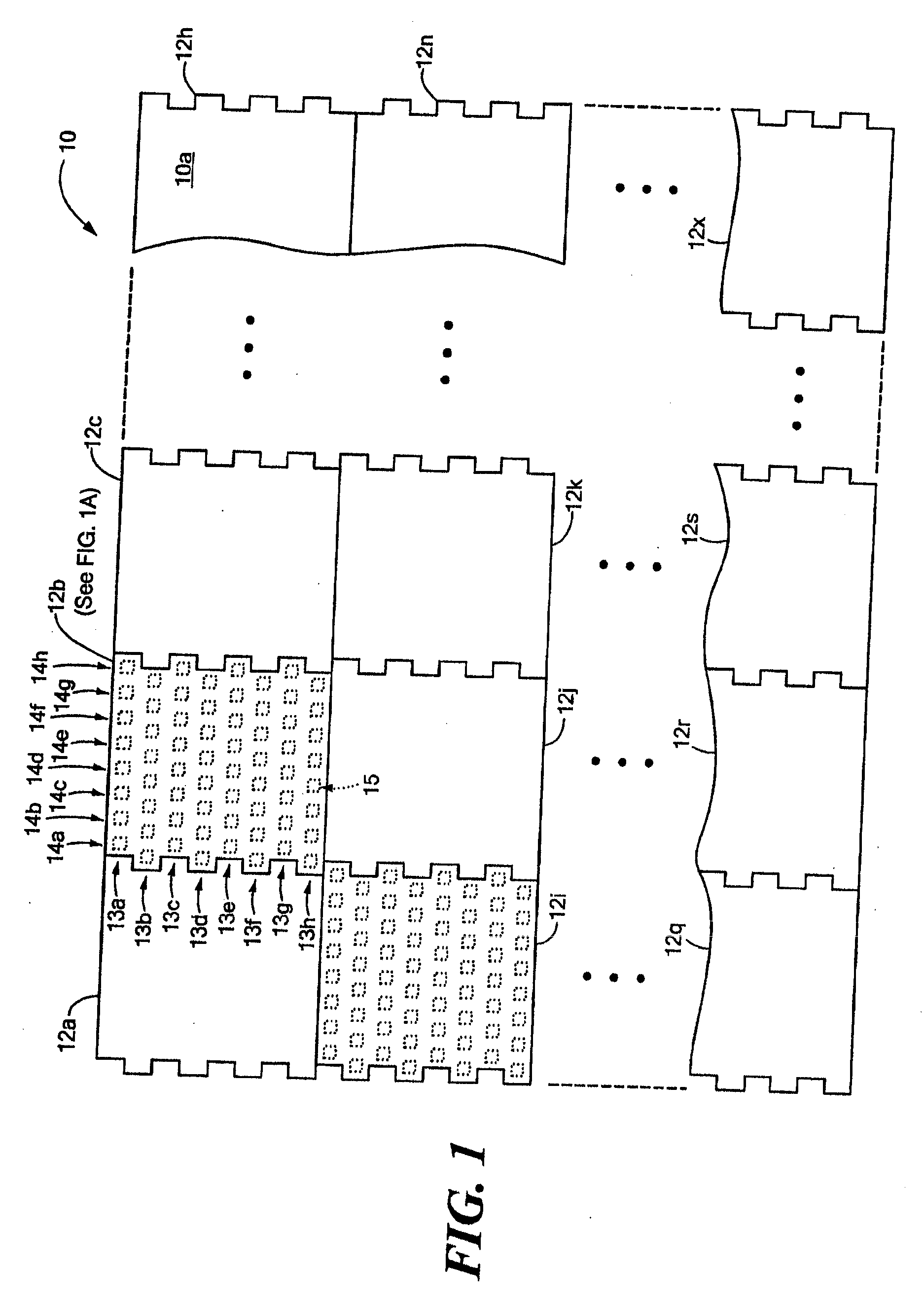Tile sub-array and related circuits and techniques
a technology of phased arrays and circuits, applied in the field of phased array antennas, can solve the problems of limiting the use of phased arrays in all but the most specialized applications, assembly and component costs, especially for active transmit/receive channels, are major cost drivers, etc., and achieve the effect of reducing the minimizing touch labor of components and assemblies, and high cost of phased arrays
- Summary
- Abstract
- Description
- Claims
- Application Information
AI Technical Summary
Benefits of technology
Problems solved by technology
Method used
Image
Examples
Embodiment Construction
[0040]Before describing the various embodiments of the invention, it should be noted that reference is sometimes made herein to an array antenna having a particular array shape and / or size (e.g., a particular number of antenna elements or a particular number of tiles) or to an array antenna comprised of a particular number of “tile sub-arrays” (or more simply “tiles”). One of ordinary skill in the art will appreciate that the techniques described herein are applicable to various sizes and shapes of array antennas.
[0041]Similarly, reference is sometimes made herein to tile sub-arrays having a particular geometric shape (e.g. square, rectangular, round) and / or size (e.g., a particular number of antenna elements) or a particular lattice type or spacing of antenna elements. One of ordinary skill in the art will appreciate that the techniques described herein are applicable to various sizes and shapes of array antennas as well as to various sizes and shapes of tile sub-arrays.
[0042]Thus,...
PUM
 Login to View More
Login to View More Abstract
Description
Claims
Application Information
 Login to View More
Login to View More - R&D
- Intellectual Property
- Life Sciences
- Materials
- Tech Scout
- Unparalleled Data Quality
- Higher Quality Content
- 60% Fewer Hallucinations
Browse by: Latest US Patents, China's latest patents, Technical Efficacy Thesaurus, Application Domain, Technology Topic, Popular Technical Reports.
© 2025 PatSnap. All rights reserved.Legal|Privacy policy|Modern Slavery Act Transparency Statement|Sitemap|About US| Contact US: help@patsnap.com



